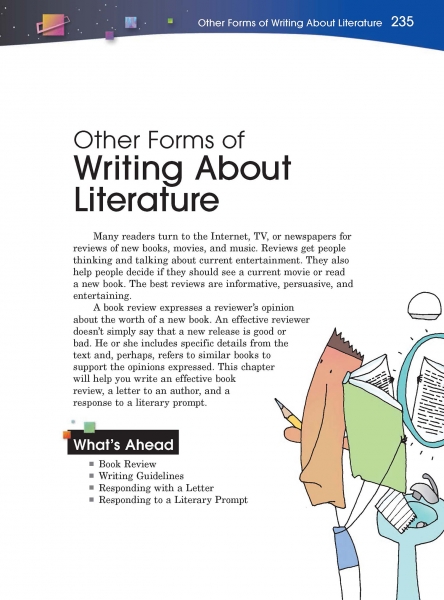Page 235 from

Start-Up Activity
Show a trailer for an exciting new movie, and then lead a discussion about it:
-
Did the trailer make you want to go see the movie? Why or why not?
-
Why did they show the characters that they showed? Why did they choose the scenes they showed?
-
How did they get your interest without giving away spoilers?
Afterward, point out to students that their responses to literature can be just like movie trailers, showing the highlights of a story or poem and getting others interested in reading it. And like a good movie trailer, a response to literature should not spoil the experience for other readers.
Think About It
“Any reviewer who expresses rage and loathing for a novel is preposterous. He or she is like a person who has put on full armor and attacked a hot fudge sundae.”
—Kurt Vonnegut

Start-Up Activity
Show a trailer for an exciting new movie, and then lead a discussion about it:
-
Did the trailer make you want to go see the movie? Why or why not?
-
Why did they show the characters that they showed? Why did they choose the scenes they showed?
-
How did they get your interest without giving away spoilers?
Afterward, point out to students that their responses to literature can be just like movie trailers, showing the highlights of a story or poem and getting others interested in reading it. And like a good movie trailer, a response to literature should not spoil the experience for other readers.
Think About It
“Any reviewer who expresses rage and loathing for a novel is preposterous. He or she is like a person who has put on full armor and attacked a hot fudge sundae.”
—Kurt Vonnegut
